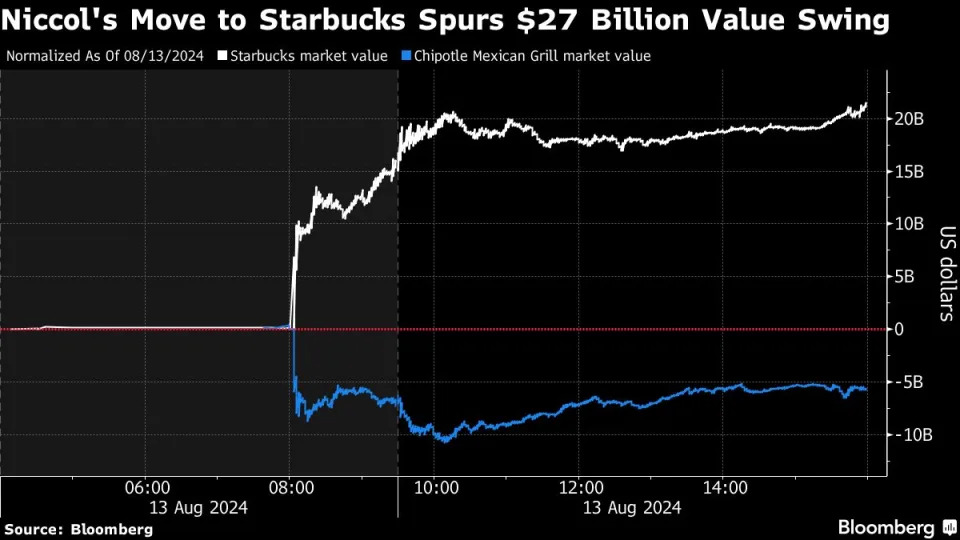Most streaming platforms are finally profitable or, at the very least, close to breakeven. But the demise of the cable bundle is still a complicated mess for most legacy players looking to survive in a new digital-first era.
Last week, both Paramount Global ( PARA ) and Disney ( DIS ) reported their first quarter of profits in their respective streaming businesses, signaling a significant shift in the industry after multiple quarters of bruising losses.
In total, those two companies, along with Netflix ( NFLX ), NBCUniversal's Peacock ( CMCSA ), and Warner Bros. Discovery's Max ( WBD ), reported overall profits of roughly $3.3 billion in the first two quarters of the year. That's significantly ahead of the $683 million loss the combined companies reported in the year-ago period.
Still, "it's a difficult space," Barton Crockett, managing director at Rosenblatt Securities, told Yahoo Finance.
Even with the recent achievement of streaming profitability, "I think that Netflix is clearly running away with the ball and the media-based streaming companies are struggling to even get on the field."
And even for a pure-play streaming giant like Netflix, Crockett noted stalling growth across the ecosystem as the consumer becomes "more price sensitive."
"The free, ad-supported streaming television offerings are really where there's much more kind of growth right now," he said. "But it's hard to find a pure equity play on that."
As Crockett alluded to, Netflix has been the leader when it comes to overall profit gains in streaming, pulling in roughly $4.5 billion in net income during the first half of the year.
The results come as the streamer has shifted its spending to focus on more "quality over quantity" projects, added new revenue initiatives like password-sharing crackdowns and advertising tiers, and recently expanded its content to include sports, live events, and even games.
Other streaming services adopted similar strategies in the race for survival. But they've also experienced their own reckonings amid the pressure to scale and achieve profitability.
Warner Bros. scrapped multiple projects in an attempt to slash millions in costs. Paramount on Tuesday began laying off another 15% of its workforce, shuttering its TV studio in the process . Disney underwent an intense restructuring period last year following the surprise return of CEO Bob Iger.
In addition to those efforts, virtually all of the major streaming giants have raised prices at a time when consumers are becoming more choosy, with churn rates hovering at elevated levels.
"The prices for subscriptions without advertising are starting to go through the roof," Bank of America analyst Jessica Reif Ehrlich told Yahoo Finance. "As a result, our view is that consumers will drop several streamers and maybe rotate a little bit more depending on the content cycle."
To combat fickle consumers, competing platforms are now bundling their services together. As WBD CEO David Zaslav told investors in May, "There's more strength together."
But as media companies call for a streaming wars truce, it's clear other areas of the business could be even more problematic.
'Shrinking to survive'
Amid last week's streaming inroads, Warner Bros. Discovery and Paramount took a collective $15 billion hit on the value of their respective cable businesses.
The back-to-back moves highlight the struggles within the industry as more consumers cut the cord.
"Am I disappointed that the trends in the linear business haven't been a little better? There has been talk about recovery a year, a year and a half ago. It hasn't really happened. It is what it is. We're managing this as best we can," Zaslav said last week.
For years, linear advertising and affiliate fees had consistently boosted revenues for these networks. The shift to streaming saw cable subscribers decline, hurting affiliate fees, and streaming companies now entering the ad market have taken another leg out of the stool.
The pressure from deteriorating linear networks, coupled with heavy debt loads, has forced legacy media giants to cut costs wherever they can — hence the massive restructuring and layoff efforts.
KeyBanc analyst Brandon Nispel said recent strategies from Paramount and others seem "to center around shrinking to survive, where the potential growth of the business is likely to be challenged."
Rumors have swirled when it comes to future strategic options, which could include sales and splits. Paramount, for its part, is currently going through the process of being acquired by Skydance, with the company saying it expects the deal to close in the second quarter of next year.
Warner Bros. has also been at the center of M&A rumors after its two-year post-merger lockup period officially ended in early April. But the future remains unclear.
"WBD remains in a tight corner with over 80% of its profits derived from linear cable networks," MoffettNathanson analyst Robert Fishman wrote in a recent note. "Exploring different strategic options should be something management explores but we hesitate to see any meaningful upside unless the debt burden can be reduced."

Alexandra Canal @allie_canal , LinkedIn,





